
Have you ever taken part in a tasting event and secretly realized that you had no idea what you were doing? Maybe it was beer, maybe wine. Maybe it was wedding cake. Regardless of the subject matter, you may have enjoyed it but you probably walked away with no more than a short list of “likes” and “didn’t likes.” Well, today I’m going to change all of that. I’m going to share some tools that will empower you to make better decisions. Tools that will make you look brilliant and knowledgable. I’m about to make your life a little easier. At least when it comes to evaluating craft beer, that is…
Recently, Rachel and I were invited to an annual gathering put on by my friend and coworker Michael E. Smith of Dadsigner.com. Every year, Mike organizes “Flight of the Pumpkin,” an autumnal celebration featuring a tasting of six selections of pumpkin or harvest-style craft beers. As noted above, I thoroughly enjoyed it, but I had no way of really evaluating the beers properly, so I set out in search of some education.

So what’s with all the craft beer tastings these days, anyway? It seems America has a new-found love for craft beer, even though beer has been one of the most-consumed alcoholic beverages in the country for well over 125 years. The shift away from strong spirits like whiskey resulted, by and large, from the rise of the temperance movement at the end of the 19th Century. Beer could be brewed with a much lower alcohol content and was deemed more “acceptable” since more of it could be imbibed without causing drunkenness. Despite these cultural attempts at reconciliation, the temperance movement and the prohibitionists won out, resulting in the adoption of the Volstead act which effectively banned the production of intoxicating beverages. Thirteen years later, the unintended consequences of rampant organized crime and massive losses in tax revenue, along with a general disregard for the law altogether, led to its demise. Beer brewing in the United States had encountered a major bump in the road, and only now are we beginning to see a more widespread acceptance of beer as a social beverage to be enjoyed amongst polite company. In fact, 2012 saw the number of small breweries operating in the United States finally match or exceed the amount operating during colonial times.
In the late 1970s, further changes in federal law made it easier for Americans to legally experiment with homebrewing. As a result, small local brewpubs began popping up all over the country. These new beers offered a wide array of flavor profiles, from subtle, citrus, and sweet, to strong, bitter, and hoppy. It’s now common to see upscale restaurants offering “flights” of beer – usually 3-6 small glasses, featuring either similar selections from different breweries, or different styles of beer from the same brewery.

This is all well and good, but how is a craft beer novice supposed to make sense of a tasting? And let’s face it – based on the history cited above, most of us are novices. What exactly are we supposed to be evaluating? It seems like a good tasting event should produce more than just checkmarks in the boxes of “I like this” and “I don’t like that.” There’s an intellectual attraction to the craft beer tasting that separates the participants from the Coors Light-swilling masses.
The answer? We simply need a standardized set of metrics that can be applied to any beer style. With time and tasting, these metrics can reveal why we “like this” and why we “don’t like that.” In my research, I discovered that beer has just such a set of metrics: appearance, aroma, flavor, mouthfeel, and finish.
- Appearance – What is the color? Beer ranges from a pale yellow (referred to as straw) to black.
- Aroma – What does the beer smell like? Does it have notes of citrus, spice? Does it have a floral bouquet, or does it remind you of pine?
- Flavor – What does the taste remind you of? Are there notes of fruit, coffee, or chocolate? Bread or spices?
- Mouthfeel – Does the beer make your mouth feel slick, or is it creamy? Does it prickle with carbonation, or does it have an astringent quality that seems to give you a drymouth effect?
- Finish – After you swallow, how long does the flavor stick with you? Is it gone from your mouth fairly quickly or does it hang on?

Let’s face it, it’s fun to drink good beer no matter how you decide to apply your thinking. Putting these metrics to use, however, helped to satisfy my intellectual curiosity at the same time, which led to a much more enjoyable experience all around. The next time you have the opportunity to enjoy a craft beer tasting, I highly recommend you try it. To make things easier, the good folks over at Beerology have created this handy beer evaluation sheet that I use every time.
If you’ve stuck with me this far, you’re probably interested in some practical application. One thing to keep in mind is that there is no wrong answer when it comes to describing flavors and aromas. You should use descriptors that come to you from your own experience and memories, not what you think you should say. Above all, taste, taste, taste every color, style, and variety you can. You’ll never be able to say something is “medium intensity” if you haven’t tried both bland beers and strong beers. That said, I’ll finish this post off with my notes from Mike’s Flight of the Pumpkin beer selection.

The lineup: 1. Ballast Point Brewing Company – Pumpkin Down: Scottish Ale with Pumpkin 2. Long Trail Brewing Company – Harvest Barn Ale 3. Hofbrau – Oktoberfest 4. Elysian Brewing Company – Night Owl Pumpkin Ale 5. Evil Genius Beer Company – Trick or Treat Chocolate Pumpkin Porter 6. Vault Brewing Company – Sweet Potato Ale
1. Ballast Point Brewing Company – Pumpkin Down: Scottish Ale with Pumpkin
- Appearance: Beautiful copper color with brilliant clarity. Poor head that was gone in minutes.
- Aroma: Medium intensity and balanced. Notes of floral and citrus
- Flavor: Balanced with a medium intensity. Notes of strawberry, citrus, spice, grain, and orange peel
- Mouthfeel: Medium body with lively carbonation. Slightly prickly effect
- Finish: Short and mild, swings slightly bitter
- General Impression: Of all the beers in the lineup, this was the least impressive to me, although I did like the surprising notes of fruit in the flavor.
2. Long Trail Brewing Company – Harvest Barn Ale
- Appearance: Dark copper color, brilliant clarity, ok head
- Aroma: Medium intensity, fairly well-balanced, slightly sweet. Notes of chocolate and dried fruit
- Flavor: Mildly intense and slightly sweet. Notes of coffee, dark chocolate, and whole grain bread.
- Mouthfeel: Medium body with lively carbonation. Slick feel and ever so slightly astringent.
- Finish: Medium length and intensity, nicely balanced
- General Impression: I liked this beer better the second time around. I liked the coffee & chocolate vibe, and the craftsmanship was very good.
3. Hofbrau – Oktoberfest
- Appearance: Straw-colored pilsner-style beer with brilliant clarity and a good head that lasted for quite a while.
- Aroma: Faint intensity, sweet with strong citrus notes
- Flavor: Medium intensity and sweet with just a touch of bitterness. Strong citrus notes with light spice and floral overtones.
- Mouthfeel: Light body with lively carbonation that produces a crisp sensation
- Finish: Sweet and medium in length and intensity
- General Impression: This beer had the best mouthfeel, in my opinion. It was easy to drink and light with a nice flavor.
4. Elysian Brewing Company – Night Owl Pumpkin Ale
- Appearance: Golden amber, lightly veiled appearance with an ok head
- Aroma: Strong and sweet, with an intense hit of pumpkin pie spices and citrus
- Flavor: Intense but well-balanced with notes of cinnamon, nutmeg, clove, and ginger
- Mouthfeel: Medium bodied with lively carbonation. Prickly and slightly astringent
- Finish: Long, medium intensity, and slightly sweet
- General Impression: Really nice craftsmanship. Overall I think I liked the flavor and aroma of this brew the best. It truly tasted like fall. My only criticism is that the texture could be a bit creamier.
5. Evil Genius Beer Company – Trick or Treat Chocolate Pumpkin Porter
- Appearance: Dark brown with brilliant clarity. Head was ok, but thickness didn’t last
- Aroma: Strong and sweet with notes of chocolate, spice, and toffee
- Flavor: Nearly exact match to the aroma – strong and sweet with notes of chocolate, spice, and toffee
- Mouthfeel: Medium bodied, mildly lively carbonation that was more bubbly than crisp, with an astringent effect when held in the mouth
- Finish: Long, mildly intense, and well-balanced
- General Impression: Good craftsmanship and fresh. I actually expected to like this one the most since I had it last year and loved it. I got the definite impression that this year’s batch wasn’t as good.
6. Vault Brewing Company – Sweet Potato Ale
- Appearance: Amber colored and cloudy with a persistent head that lasted long after it was poured
- Aroma: Fairly strong and sweet with notes of floral and citrus
- Flavor: Medium intensity and well balanced with definite notes of sweet potato, along with orange peel and cinnamon.
- Mouthfeel: Creamy with a medium body and faint carbonation. Reminds me a lot of Guinness, but not as thick.
- Finish: Balance swings closer to sweet on the finish with a medium-light intensity
- General Impression: This beer was fresh, unique, and delicious. The quality of craftsmanship was evident in the persistent head and well-balanced flavors. It also came in a “nitro-can” that is pressurized with nitrous oxide to replicate the characteristics of enjoying it from the tap. Really enjoyable brew.
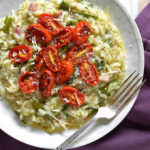


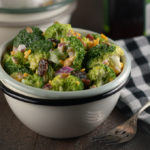
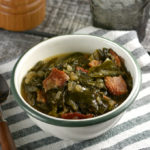

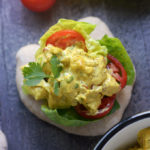
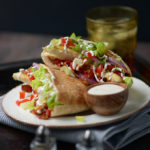
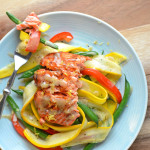

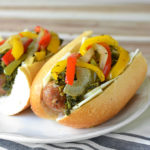

Awesome post and congrats on one year!!
Thanks Cassandrea!
This is great information! Very detailed for anyone wanting to give these brews a try! Congrats on your one year anniversary!
Thanks Sherri!
Thanks for all the great tips.
My pleasure, Cristie!
Hey,
Hard to share a comment since pop ups get in front of the writing box. Don’t see what Im writing. Yet a good post. As belgian I like beer. I think I might like the
Harvest Barn and chocolate pumpkin porter a little!
Thanks for sharing!
Simon
Hey Simon – I’m a big fan of Belgian beers, too. Lucky you to be so near the source. 😉 Thanks for the heads-up about the pop up issue. I sent you an email. I want to make sure we get that fixed.
Thanks for this post. With all of the complex (and delicious) craft beers available today, tastings can be a little overwhelming at times. You’ve given some great tips!
Hi Amanda – I agree – and there are more types coming out every day! I was getting tired of not knowing what I was doing. Hope this will help you out a bit!
I’m not an beer expert but I like to try different niche kinds of beer. I can only say if I like it or not, I couldn’t describe the aroma and the rest of it’s features as nice as you did!
Hey Teresa – I’m not an “expert” either. The most important thing I’ve learned is not to be intimidated. When you’re evaluating something, just use your own vocabulary. Does it remind you of fruit? Does it remind you of pretzels? There’s no wrong answer! It’s all about the associations you make in your own mind. Try it – I think you’ll enjoy it. 🙂
Thanks for an informative, well-researched post! It’s nice to be able to demystify beer tasting.
Hi Mary – you bet. Glad it was helpful!